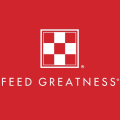
Weaned pigs are the future of your business. How you manage them in the first two weeks post weaning will make a difference now and when they go to market later. Yet, many obstacles stand in the way of strong starts in the nursery. Pigs face separation from the sow, a changing diet and disease challenges all within a short timeframe.

“The common theme among obstacles for weaned pigs is feed intake,” says Emily Otto-Tice, Ph.D., senior swine nutritionist at Purina Animal Nutrition. “Supporting early feed intake can create a strong start in the nursery. That strong start, along with good herd management and nutrition, helps put pigs on track for success in every phase through finishing.”
Consider these three barriers to early feed intake and ways to overcome them:
Barrier #1: Separation from the sow
“The first obstacle weaned pigs face is weaning itself – being removed from a familiar environment and food source with the sow,” says Otto-Tice. “Their new environment looks, smells and is structured differently than what the pigs are used to.”
As a result, feed intake 3-4 days after weaning is often too low to meet the pig’s needs.
“Pigs are highly sensitive to taste and smell, and you can use that to your advantage,” says Otto-Tice. “We can use nutrition – including gel hydration products, pre-starters and starters – with recognizable aromas and flavors to encourage early intake.”
In addition to early starts, the right ingredients can also encourage frequent meals, which are needed during this timeframe when the pig’s stomach is only about the size of an egg. Weaned pigs can only eat about an ounce of feed at a time, so they need to eat often for adequate intake.
Barrier #2: Diet changes
The transition from sow’s milk to dry feeds is an obvious change, but subsequent changes between diets can also interrupt feed intake. Each interruption has the potential to impact gut development, which is driven by steady intake of complex feed ingredients and water.
Maintaining consistent palatability and ingredients between diets can reduce interruptions. It’s also the time to prioritize feed and water flow.
“Approximately 70% of the pig’s immune system is housed in the gut. The more consistently we can keep pigs eating and drinking, the more the gut develops, and the more immunocompetence pigs have,” adds Otto-Tice.
A healthy, well-developed gut has the ideal surface area for nutrient absorption and functions as a barrier to disease.
Barrier #3: Disease challenges

Pre-weaned pigs are protected from disease by antibodies in sow’s milk. But, that protection starts to wane at weaning and is gone after about three weeks. Meanwhile, it takes six weeks from weaning for the pig to develop its own immunity.
“Ultimately, we see a three-week gap in immune support that can provide a foothold for opportunistic pathogenic bacteria and viruses to cause disease,” says Otto-Tice. “But, through nutrition, we can help the pig start developing its own immunity – and boost its immunity – to stave off disease threats.”
Careful environmental management can also help minimize the threat of disease. Sanitizing pens before bringing in pigs can help reduce disease threats. Providing comfort mats, managing supplemental heat, reducing drafts and ensuring pigs have adequate access to water can minimize stress and support pig health during this phase.
Protection for long-term performance
Pigs face many barriers in the weeks post weaning, and any one of them can cause a performance lag that can echo through to finishing. Fine-tune your weaned pig management to support feed intake for more predictable and consistent finishing pig performance – now and in the future.
August 13, 2020 - Purina Animal Nutrition LLC




